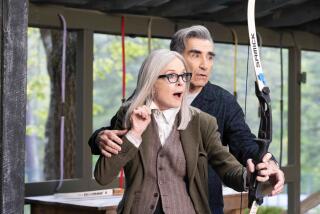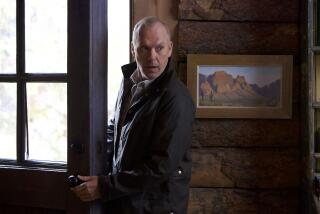Classic Hollywood: Buster Keaton’s silents and some early talkies
“Steamboat Bill, Jr.” was Buster Keaton’s last independent feature before making, as he would later say, the biggest mistake of his career by giving up his own studio and signing with MGM.
Released in the 1928, this silent slapstick comedy is considered one of Keaton’s most ambitious and funniest feature films including many iconic set pieces — most memorably, a house literally falling down around him during a cyclone, a stunt that could have easily killed a less athletic and agile actor.
But while “Steamboat Bill, Jr.” is legendary, few people know that there are actually two different negatives of the film.
Back in the silent era, it was common practice for filmmakers to create two separate negatives featuring alternate takes and camera angles. In the case of “Steamboat Bill Jr.” two cameras were used to capture the difficult stunts that could be done in only one take. One negative would be used for prints for American audiences, while the other would be sent overseas for international release prints.
This month, Kino released a new Blu-Ray and two-disc regular DVD of “Steamboat Bill, Jr.” that features both versions. The visual documentary included on the discs explains that no one knows for sure which print was released in the U.S. But it’s likely that the crisper version from the Buster Keaton Archives was shown in U.S. theaters, while one from another archive was released internationally.
It’s rather difficult to figure out the subtle differences between each version, but the documentary shows some of the changes especially in one scene in which Keaton tries on several hats while his father watches; the father’s reactions differ in the two versions. Throughout the film it’s possible to detect how scenes were shot differently because the two cameras were not in the same location.
“Steamboat Bill, Jr.” is a follow-up to Keaton’s favorite film, the 1926 comedy “The General,” but instead of the action revolving around a locomotive during the Civil War, “Steamboat” is set around the Mississippi River and the paddlewheel boats. Keaton plays William Canfield Jr., a young Boston collegiate who wears a beret, wide pants and a pencil-thin mustache, who comes to visit his father ( Ernest Torrence), best known as Steamboat Bill.
The crusty paddleboat captain hasn’t seen his son since he was a baby and is shocked to discover his boy would rather play the ukulele than navigate the Mississippi. To make matters worse, Keaton has fallen in love with a beautiful young woman (Marion Byron) who happens to be the daughter of Steamboat Bill’s bitter rival. The film concludes with a massive cyclone where Keaton must prove his bravery to his father and his girlfriend.
The film was not a financial success and Keaton listened to his long-time producer and brother-in-law Joseph Schenck, who told Keaton that he should sign with MGM.
Keaton listened to Schenck but bristled at the constraints put upon him at MGM. His first feature at MGM, 1928’s “The Cameraman” was terrific, but Keaton’s career went downhill quickly at the studio. His drinking problems didn’t help his case, nor did his nasty divorce with actress Natalie Talmadge.
In 1934, Keaton signed to do low-budget two-reel comedies for Earl W. Hammon’s Educational Pictures and stayed with the studio until it closed in 1937. Kino has also just released 16 of these shorts on the two-disc set, “Lost Keaton.” Though these films were shot on a shoestring, they allowed Keaton — who played a character named Elmer in the majority of the shorts — to return to his athletic, gag-filled roots. In fact, he was able to recycle a lot of his best sight gags from his silent films.
The set also includes Keaton’s favorite Educational comedy, 1936’s “Grand Slam Opera,” in which he goes on a radio talent show, and 1935’s “The Timid Young Man,” which marks the only time Keaton worked with the legendary director-producer Mack Sennett.
He was also able to employ his family, with whom he appeared in vaudeville in two of the shorts: 1935s “Palooka From Paducah,” which features mother Myra, father Joe and sister Louise; and his final Educational production, 1937s “Love Nest on Wheels,” with younger brother Harry subbing in for his father.
More to Read
Only good movies
Get the Indie Focus newsletter, Mark Olsen's weekly guide to the world of cinema.
You may occasionally receive promotional content from the Los Angeles Times.











